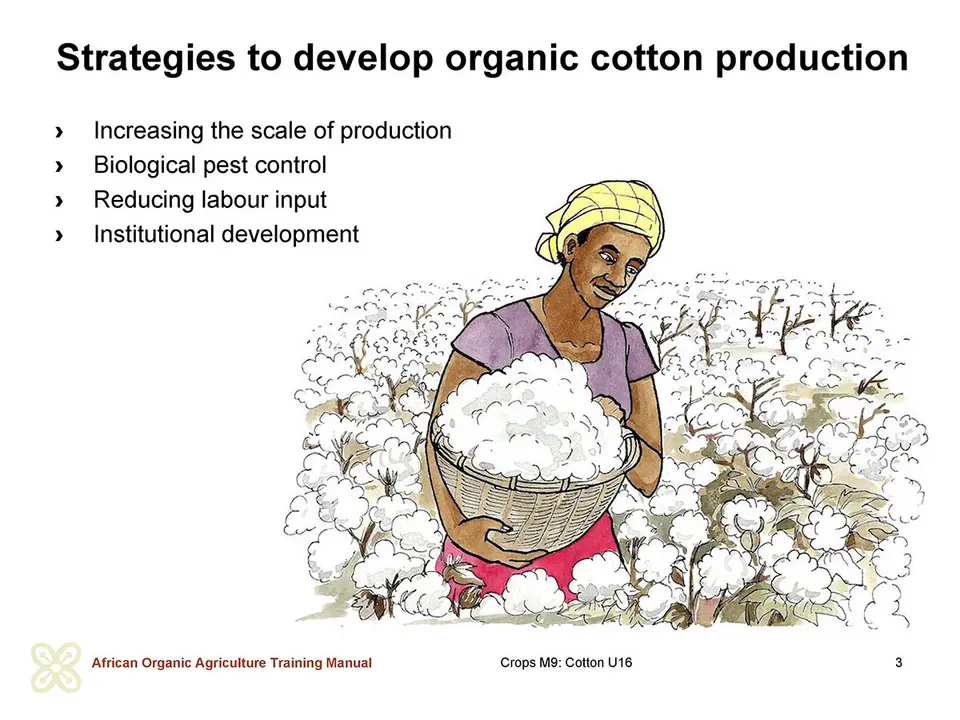Potential of organic cotton production in Africa
Most organic cotton farmers in Africa are small-holder farmers and grow less than 2 hectares of cotton on farms with a total size of less than 10 hectares. They compete with fully-industrialised production and processing systems in the USA, Brazil and elsewhere, which grow cotton on farms of more than 500 hectares. The African organic cotton industry, promoted mainly by civil society organizations and niche private sector operators, is still struggling with scaling-up and getting more support from national bodies. The small-scale projects are fighting with relatively high costs due to the lack of economies of scale and the limited research and extension services that would be needed to accelerate the expansion of proven best practices. However, the following strategies can help in the development of the organic cotton sector:
- Increasing the scale of production - Larger scale projects and a better support by national services and policies will definitively contribute to bring down production costs, increase productivity and enhance the attractiveness of this young industry. The establishment of larger organic cotton areas providing more than 100 tons is necessary for success.
- Biological pest control - The high susceptibility of cotton plants to pest attacks puts high demands on appropriate research and extension, especially regarding biological control options. Well organized set-ups, linking producers with researchers gives the required information for proper management of pests.
- Higher labour input - Particularly the necessary weeding, manure applications and harvesting by hand increases the labour input for organic cotton producers. Through research and technology development (machinery and best practices), labour saving implements are needed for the different activities in order to improve efficiency and reduce costs associated with cotton production.
- Institutional development - Research organisations and programs, cotton universities and producer organizations as well as properly designed government policies with appropriate budgets are indispensable in the long term to remain competitive. Regional cooperation and networks of exchange could create synergies and enhance the knowledge base. Strong and committed leaders from within the producer community are indispensable to further develop the (organic) cotton industry in Africa.
Assessment of the local cotton production situation
Invite the farmers to a brief brainstorming session to understand their knowledge of cotton production and markets. Have they experienced any of the above or other challenges in growing and selling cotton? Note down the points in key words on a flip chart or board. Compare the aspects with those listed in transparency 1. Discuss which of the challenges are most important to them.

 tap and then scroll down to the Add to Home Screen command.
tap and then scroll down to the Add to Home Screen command.